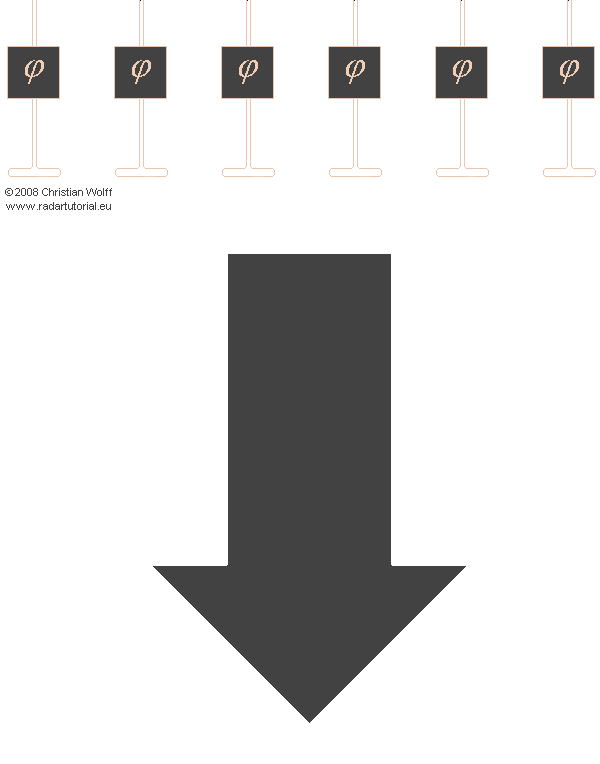MIMO stands for Multiple Input and Multiple Output.
Multiple Input refers to Multiple antennas at the transmitter side which can do multiple transmissions into the propagation channel.
Multiple Output refers to the multiple antennas present at the receiver end which can receive multiple signals out from the propagation channel.
The following figure depicts the 4×4 MIMO which constitutes 4 antennas at the transmitting side and 4 antennas at the receiver end.

Massive MIMO is the extension of MIMO with which we can bring a huge number of antennas at the base station which in turn improves the throughput and efficiency.

Why MIMO in 5G?
In 5G, high-frequency waves (mmWaves i.e. 30Ghz to 300Ghz) are used. When high-frequency waves are used then the wavelength gets decreased. If the wavelength is less, then the received power also will be less.
Let’s consider $t_x$ is transmitting antenna with the power $P_{tx}$ and $r_x$ is the receiving antenna with the power $P_{rx}$. The distance between the transmitting antenna and the receiving antenna is considered as $R$.

From the inverse square law, the received power is inversely proportional to the square of the distance.
P_{rx} = {P_{tx} \over 4\pi R^2}In real-time scenarios, we know the received power (Ptx) also depends upon the frequency of the wave. So we can say
P_{rx} = {P_{tx} \over 4\pi R^2} {\lambda^2 \over 4\pi}For example, if we are using 3Ghz in LTE and 30Ghz in 5G, then the wavelength of 5G i.e. 30GHz is 10 times shorter than 3Ghz. So to balance this we have to add more power gain at the transmitter side or receiver side. The power gain can be done by adding more transmitters or more receivers and due to which we need MIMO in 5G.
P_{rx} = {P_{tx} \over 4\pi R^2} {\lambda^2 \over 4\pi} {G_{rx} G_{tx}}G_{rx} = Transmitter gainG_{tx} = Receiver gainBenefits of MIMO
Beamforming (Array Gain)
Using the MIMO technique we can construct a phased array antenna with which based on the antenna spacing and phase signal we can control the shape and direction of a signal. The creation of a beam using the technique of interfering and constructing patterns is called beamforming.

By altering the phase of a signal generated by the antenna we can steer the beam towards a particular direction which is known as beam steering. With the following figure, you can visualize how the beam steering work.

Watch the following video to understand more about altering the beam direction by changing the phase of each antenna.
By producing the stronger beam towards a particular direction we can improve the received signal to noise ratio (SNR) and which in turn reduces the data loss and re-transmission & improves the throughput.
Diversity Gain
With diversity gain, we can reduce the impact of signal fading. Let’s assume we have two antennas at the receiver end and each antenna has a different path through which it can receive the signal.

In this case, one path might experience a fade while the other path may not at the same time. So, the power of the two receiving antennas are combined & the receiver end can take the advantage of the paths which are not experiencing fades.
Spatial multiplexing
Using MIMO & Beamforming, we can generate two beams in different directions at the same time.

By forming different beams for different UE’s, the entire physical resource blocks in a beam can be allocated to a particular UE. With this, we can serve two different UE’s in two different directions at the same time & frequency domain which improves the bandwidth efficiency.
Based on the channel conditions the MIMO is used to transfer multiple parallel streams of data in good coverage conditions to maximize the data throughput and a single stream of data to maximize the diversity gain when the device is in poor coverage conditions.


Drawbacks of MIMO
The drawback of MIMO is its increased implementation complexity and hardware requirement.
- MIMO requires Additional antenna elements on the transmitting side or receiver side.
- Additional processing requires at the sender and receiver sides due to more no of antennas.
- Additional signaling requires in terms of getting feedback from the receiver and resource allocation information from the transmitter.
